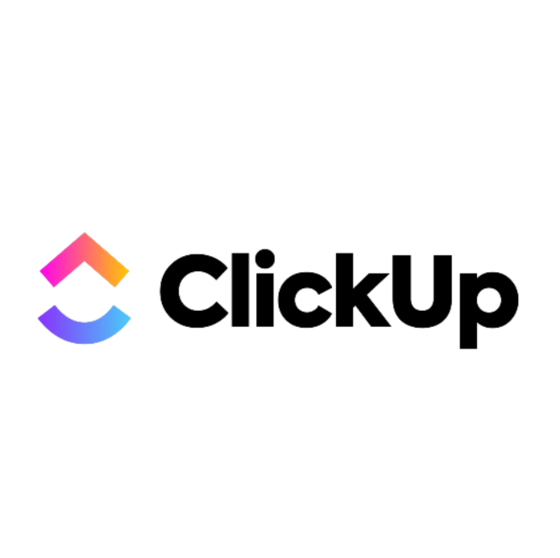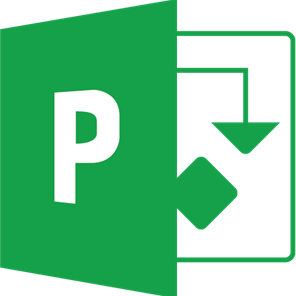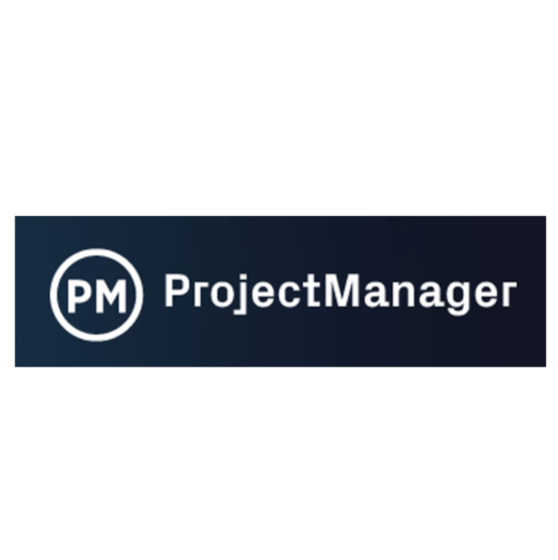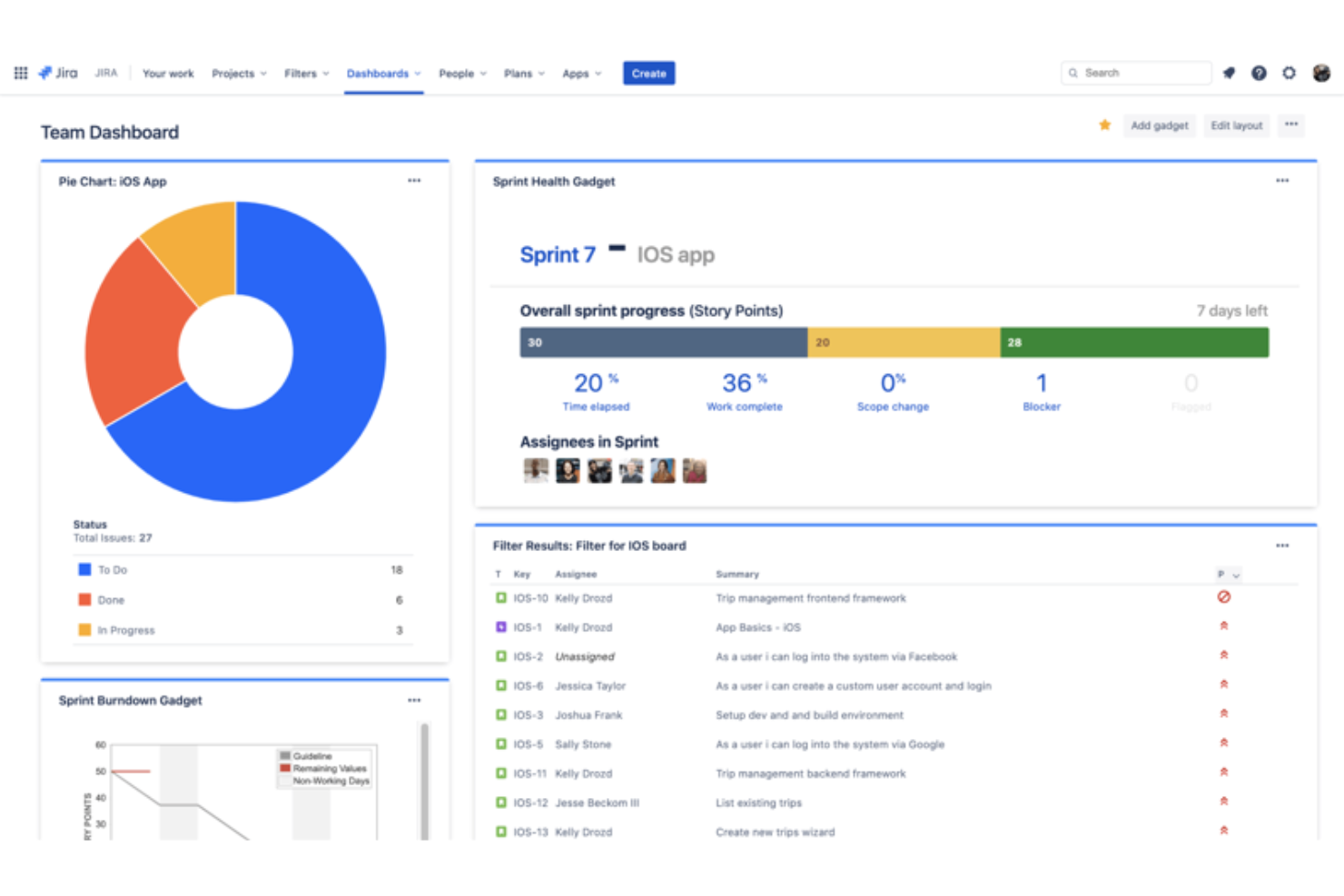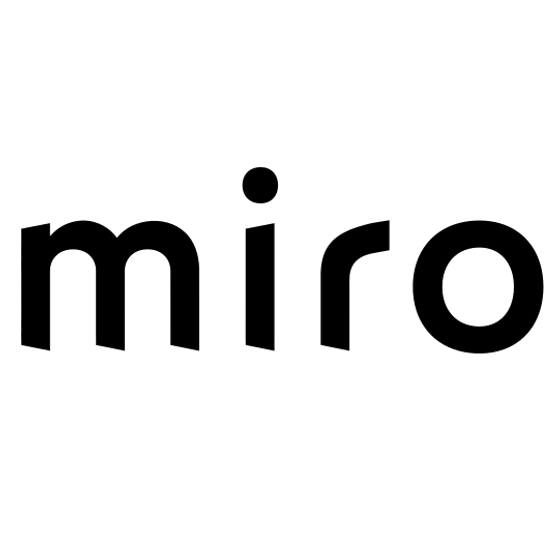10 Best WBS Software Shortlist
Here’s my pick of the 10 best software from the 20 tools reviewed.
Get free help from our project management software advisors to find your match.
Choosing the best WBS (Work Breakdown Structure) software out of the wide variety of tools available on the market can be overwhelming. Fear not—I'm here to guide you through the maze. With my extensive background in digital project management, I've used many WBS tools to break projects down into manageable chunks. I understand the intricacies of project decomposition and can pinpoint the software that will serve you best.
Why Trust My Software Reviews
I’ve been testing and reviewing project management software since 2012. As a project manager myself, I know how critical and difficult it is to make the right decision when selecting software.
I invest in deep research to help my audience make better software purchasing decisions. We at DPM have tested more than 2,000 tools for different project management use cases and written over 1,000 comprehensive software reviews. Learn how we stay transparent & our software review methodology.
Best WBS Software Summary
| Tools | Price | |
|---|---|---|
| Canva | From $12.99/user/month | Website |
| Microsoft Project | From $10/user/month (billed annually) | Website |
| ProjectManager | From $13/user/month (billed annually) | Website |
| EdrawMax | From $7.90/user/month (billed annually) | Website |
| Jira | From $7.16/user/month (billed annually, min 5 seats) | Website |
| MindView | From $379/user as a one-time purchase | Website |
| Visual Paradigm | From $6/user/month (billed annually) | Website |
| Miro | From $8/user/month (billed annually) | Website |
| GanttPRO | From $7.99/user/month (billed annually) | Website |
| Lucidchart | From $6.67/user/month + free plan available | Website |

Compare Software Specs Side by Side
Use our comparison chart to review and evaluate software specs side-by-side.
Compare SoftwareHow to Choose WBS Software
As you work through your unique software selection process, keep the following points in mind:
- Project Complexity: WBS (Work Breakdown Structure) software should be capable of handling the complexity of your projects. For large projects with many components, you'll need software that can break down tasks into smaller, manageable pieces and show the relationships between them. This is particularly relevant for industries like construction or software development, where projects can be highly intricate and multi-layered.
- Collaboration Needs: Consider how the WBS software facilitates collaboration among team members. If your projects involve cross-functional teams or external stakeholders, look for features that allow for easy sharing, updating, and communication within the software. This is crucial for industries where teamwork is essential, such as event planning or marketing.
- Integration Capabilities: The ability to integrate with other tools is a key consideration. Your WBS software should work seamlessly with your existing project management suite, financial software, or any other systems you use. This is especially important for IT and business services, where software ecosystems are complex and interconnected.
- Budget Constraints: Cost is always a consideration, so you need to find WBS software that fits your budget while still meeting your needs. This is a significant pain point for startups and small businesses that require robust project management tools but have limited financial resources.
- User Experience: Lastly, the ease of use and the learning curve of the WBS software are critical. It should have an intuitive interface that your team can adopt quickly, minimizing training time and costs. This is relevant for all industries, but particularly for those with high employee turnover or those that frequently bring in new team members, such as consulting firms.
Overviews of the 10 Best WBS Software
Here are my detailed thoughts on each software on this list, including what they do well and best use cases for each.
Canva is a graphic design platform that enables easy creation of work breakdown structures. It excels in facilitating collaborative design efforts among team members.
Why I Picked Canva: I selected Canva for its exceptional ability to democratize design, making it accessible to users with varying levels of expertise. Its focus on collaboration sets it apart from other WBS tools. Canva is best for collaborative design due to its robust features that allow team members to work together on designs in real-time, enhancing productivity and ensuring a unified vision throughout the project.
Standout features & integrations:
Canva features include a drag-and-drop interface, a vast library of templates, and the ability to collaborate in real-time. It also offers features like commenting, version control, and an extensive range of design elements.
Canva integrates with platforms such as Google Drive, Dropbox, Slack, and more, streamlining the workflow between different tools.
Pros and cons
Pros:
- Real-time collaboration capabilities
- Extensive template library
- Intuitive design tools
Cons:
- Some learning curve for new users
- Can be expensive for larger teams
- Advanced features locked behind the Pro version
Microsoft Project is a robust tool for managing projects, offering deep integration with other Microsoft services.
Why I Picked Microsoft Project: I chose Microsoft Project for its comprehensive approach to project management, which is significantly enhanced by its integration with the Microsoft ecosystem. This integration provides a cohesive experience for those already using Microsoft products, streamlining project workflows within a familiar environment.
Standout features & integrations:
Microsoft Project features include Gantt charts, project timelines, and resource management tools. It also offers advanced analytics and reporting capabilities, which can be customized to fit the needs of any project.
Microsoft Project integrates with Microsoft Teams, OneDrive for Business, SharePoint Online, Power BI, Outlook, Microsoft Azure, Dynamics 365, Microsoft 365 apps, Windows, and Visual Studio.
Pros and cons
Pros:
- Direct integration with the Microsoft ecosystem
- Customizable project management tools
- Advanced analytics and reporting
Cons:
- May be too complex for small projects
- Relatively expensive entry point
- The steep learning curve for beginners
ProjectManager is a versatile tool for managing projects and tracking progress efficiently. It is recognized as the best for streamlining work due to its comprehensive features that simplify project planning and execution.
Why I Picked ProjectManager: I selected ProjectManager because it stands out with its ability to streamline complex projects across various industries. Its comprehensive features and integrations offer a centralized platform for managing work, which is why I consider it the best for streamlining tasks and processes. The tool's real-time data tracking and collaborative features ensure that project milestones are met efficiently.
Standout features & integrations:
ProjectManager features such as interactive Gantt charts, customizable dashboards, and detailed reporting. It also offers task management with Kanban boards and collaborative workspaces for team alignment.
ProjectManager integrates with essential tools like Google Workspace, Microsoft Office, Slack, and more, facilitating a connected project management environment.
Pros and cons
Pros:
- Extensive integration options with other tools
- Customizable project views for personal workflow optimization
- Real-time dashboard updates for immediate insight
Cons:
- Some advanced features locked behind higher-tier plans
- Project and storage limits on the base plan
- Higher cost for monthly billing compared to annual
EdrawMax is a versatile diagramming tool designed for creating detailed visual content. It is best for content visualization due to its extensive range of symbols and templates that enhance the clarity of project plans.
Why I Picked EdrawMax: I chose EdrawMax for its robust capabilities in creating comprehensive work breakdown structures with a focus on visual detail. Its unique selling point lies in its ability to transform complex project information into easily understandable visual formats. I determined EdrawMax to be best for content visualization because it excels in turning data into diagrams, making it easier for teams to grasp project scope and details.
Standout features & integrations:
EdrawMax features include diverse diagram types (flowcharts, mind maps, etc.), extensive symbol libraries, drag-and-drop editing, Visio compatibility, multi-format support, collaboration tools, cloud storage, customization options, presentation-ready outputs, and robust templates.
EdrawMax integrates with a range of tools to enhance its usability, including Microsoft Office (Word, Excel, PowerPoint), Google Suite (Docs, Sheets, Slides), Dropbox, Google Drive, OneDrive, PDF export, Evernote, and GitMind.
Pros and cons
Pros:
- Compatibility with multiple file formats for easy sharing
- User-friendly smart drawing tools
- Wide selection of symbols and templates
Cons:
- Lack of clear information on native integrations
- Potential learning curve for new users
- Annual billing is required for the lowest price
Jira is a project management tool designed for agile teams to plan, track, and release software. It can help teams to break down projects into manageable tasks, visualize dependencies, and track progress efficiently while using agile methodologies.
Why I Picked Jira: I chose Jira for its comprehensive agile project management capabilities as well as its detailed reporting and customization options. I additionally believe that Jira is the best choice for teams that value agile project management because it easily integrates with developer workflows and offers powerful tools for sprint planning and backlog prioritization.
Standout features & integrations:
Jira's standout features include customizable workflows, advanced reporting, sprint planning, and issue tracking. Its agile boards (Kanban and Scrum) and real-time collaboration tools support effective project management.
Jira integrates natively with Confluence, Bitbucket, GitHub, Slack, Microsoft Teams, Trello, Bamboo, Zendesk, Salesforce, and Asana.
Pros and cons
Pros:
- Excellent agile reporting tools
- Strong integration ecosystem
- Highly customizable workflows
Cons:
- Higher cost for small teams
- Can be complex to set up initially
- Steeper learning curve for new users
MindView is a mind-mapping tool that facilitates effective project planning. It is recognized for its capacity to enhance productivity through its specialized features.
Why I Picked MindView: I selected MindView because it excels in improving productivity, a critical aspect of project management. Its integration with MS Office and focus on enhancing the planning phase through mind mapping distinguish it from other WBS software. MindView is best for productivity improvement due to its ability to transform complex data into structured, manageable plans, which is essential for efficient project execution.
Standout features & integrations:
MindView features that cater to detailed project planning and productivity, such as advanced mind mapping capabilities, project timelines, and Gantt chart views. It also includes a built-in task management system and the ability to attach files to mind maps.
MindView integrates with Microsoft Office, allowing users to export their mind maps to Word, PowerPoint, Excel, and Outlook.
Pros and cons
Pros:
- Versatile project views including Gantt charts and timelines
- Integration with Microsoft Office
- Advanced mind mapping capabilities
Cons:
- Potential complexity for users unfamiliar with mind mapping
- No monthly subscription is available
- Higher initial cost due to one-time purchase
Visual Paradigm Online is a versatile tool for creating work breakdown structures. It excels in enabling team members to collaborate effortlessly.
Why I Picked Visual Paradigm Online: I selected Visual Paradigm Online for the list because of its emphasis on collaboration, which is critical for managing complex projects. Its ability to support multiple users working on the same WBS simultaneously sets it apart from other tools. I believe it is best for seamless collaboration due to its real-time updating feature, which ensures that all team members have the most current version of the project at their fingertips.
Standout features & integrations:
Visual Paradigm Online's standout features include real-time collaboration, a wide array of diagramming tools, and compatibility with various file formats for exporting work.
Visual Paradigm Online integrates with Microsoft Office, Google Workspace, Confluence, JIRA, Slack, Dropbox, and more, making it a versatile choice for teams that use these tools.
Pros and cons
Pros:
- Comprehensive diagramming tools with Visio compatibility
- Integration with popular platforms like Microsoft Office and Google Workspace
- Real-time collaboration capabilities
Cons:
- Limited information on the full range of integrations
- Higher cost for advanced plans
- The learning curve for new users
Miro is an online collaborative whiteboarding platform designed to empower teams to work more effectively. It is best for fostering an innovative workspace with its expansive features that facilitate ideation and collaboration.
Why I Picked Miro: I selected Miro for the list as it uniquely blends features for brainstorming, planning, and project management, setting it apart from other work breakdown structure software. I judge Miro to be best for an innovation workspace because it offers an expansive canvas and tools that encourage creative thinking and collaborative problem-solving.
Standout features & integrations:
Miro features include infinite canvas, facilitating brainstorming sessions, strategic planning, and agile ceremonies. It also provides robust integration capabilities, enhancing team productivity by connecting with other tools.
Miro integrates with popular applications such as Asana, Trello, Microsoft Teams, Google Suite, Dropbox, Box, OneDrive, GitHub, GitLab, and Bitbucket.
Pros and cons
Pros:
- Features that support various methodologies like Agile and Lean
- Integration with popular productivity tools
- Infinite canvas for unlimited ideation
Cons:
- Potential learning curve for new users due to extensive features
- Some advanced features locked behind higher-tier plans
- Higher cost for monthly billing compared to annual
GanttPRO streamlines project planning with its advanced Gantt chart tools, making it ideal for visual project tracking. This tool excels in creating detailed Gantt charts, which is essential for visualizing project timelines and managing tasks effectively.
Why I Picked GanttPRO: I selected GanttPRO for this list because its Gantt chart functionality is particularly robust compared to other WBS software. It distinguishes itself with a user-friendly interface that simplifies complex project planning. I determined GanttPRO to be best for Gantt chart functionality due to its comprehensive set of features that revolve around Gantt charts, providing a clear visual roadmap of projects and facilitating better planning and tracking.
Standout features & integrations:
GanttPRO's features include drag-and-drop Gantt chart creation, task assignment and management, deadline tracking, and progress monitoring. The tool also offers advanced features like critical path identification, custom workflows, and time logging.
GanttPRO integrates with Jira, Slack, Google Drive, Dropbox, Trello, Microsoft Office 365, Zapier, and more, enhancing its utility in diverse work environments.
Pros and cons
Pros:
- Comprehensive project management functionalities
- Real-time collaboration and communication features
- Advanced Gantt chart creation and editing
Cons:
- Limited third-party integrations compared to some alternatives
- Initial learning curve for new users
- Higher cost for monthly billing options
Lucidchart is a visual workspace that combines diagramming, data visualization, and collaboration tools. It is best for collaborative diagramming because it enables real-time teamwork from anywhere in the world.
Why I Picked Lucidchart:I chose Lucidchart for this list due to its powerful collaborative features and its ability to simplify complex projects into visual diagrams. Its real-time collaboration capabilities make it stand out from other work breakdown structure (WBS) software. I believe Lucidchart is best for collaborative diagramming because it allows team members to work together seamlessly on diagrams, ensuring that everyone is aligned and informed throughout the project planning process.
Standout features & integrations:
Lucidchart features include real-time collaboration, a drag-and-drop interface, extensive shape libraries, customizable templates, integration with popular apps like Google Workspace, Microsoft Office, and Slack.
Lucidchart integrates with several tools, including Google Workspace (Docs, Sheets, Drive), Microsoft Office 365 (Word, Excel, PowerPoint), Atlassian (Confluence, Jira), Slack, GitHub, Salesforce, Zapier, LinkedIn, and AWS architecture visualization.
Pros and cons
Pros:
- Secure with multiple certifications
- Customizable templates and easy data import
- Real-time collaboration across devices
Cons:
- May require a learning curve for new users
- Pricing details for enterprise accounts are not transparent
- Limited objects per diagram on the free plan
Other WBS Software
Below is a list of additional WBS software that I shortlisted but did not make it to the top list. Worth checking them out.
Related Project Management Software
If you still haven't found what you're looking for here, check out these other related tools that we've tested and evaluated:
- Project Management Software
- Resource Management Software
- Workflow Automation Software
- Task Management Software
- Collaboration Tools
- Gantt Chart Maker
Selection Criteria For WBS Software
Selecting Work Breakdown Structure (WBS) software requires a careful analysis of functionality and the ability to meet specific use cases that are critical for project management. The criteria for choosing WBS software should align with the buyer's needs, addressing common pain points such as project planning complexity, resource allocation, and budget tracking. As an expert who has personally tried and researched various WBS tools, I have developed a set of criteria that are essential for evaluating these solutions.
Core WBS Software Functionality: 25% of Total Weighting Score
- Hierarchical decomposition of projects
- Integration with project scheduling and Gantt charts
- Resource allocation and management
- Budgeting and cost estimation features
- Reporting capabilities with export options
Additional Standout Features: 25% of Total Weighting Score
- Innovative visualization tools for WBS
- Advanced collaboration features for team input and updates
- Real-time data analytics for project tracking
- Customizable templates for various project types
- Mobile application availability for on-the-go project management
Usability: 10% of Total Weighting Score
- Intuitive navigation and user interface
- Clear and concise layout of project elements
- A streamlined process for updating and editing WBS elements
- The balance between comprehensive features and user-friendly design
Onboarding: 10% of Total Weighting Score
- Availability of step-by-step guides and tutorials
- Interactive product tours for new users
- Access to a library of templates for quick project setup
- Support channels like chatbots and webinars for user assistance
Customer Support: 10% of Total Weighting Score
- Responsiveness and availability of support teams
- Multiple channels for support including email, phone, and live chat
- Comprehensive knowledge base and FAQs for self-service
- Community forums for peer-to-peer assistance
Value For Money: 10% of Total Weighting Score
- Transparent pricing models with clear feature breakdowns
- Comparison of plan tiers to ensure scalability
- Free trials or demos to evaluate the software before purchase
- Cost-benefit analysis relative to similar tools in the market
Customer Reviews: 10% of Total Weighting Score
- Consistency in positive feedback across various user segments
- Specific mentions of reliability and performance in reviews
- User testimonials highlighting unique benefits
- Analysis of negative reviews to identify common issues and areas for improvement
These aspects are critical for ensuring that teams can leverage the full potential of WBS software to manage their projects successfully.
Trends for WBS Software in 2024
Here are some current and interesting trends I'm noticing in WBS software technology.
- Integration with AI and Machine Learning: WBS software is increasingly integrating AI into its tools to help predict project risks and outcomes. This trend allows for more accurate planning and resource allocation. It is important for enhancing decision-making efficiency in project management.
- Enhanced Collaboration Features: Real-time collaboration has become a cornerstone of WBS software. Teams can now work simultaneously on a WBS, regardless of location. This is crucial for meeting the growing demand for remote and hybrid work environments.
- Mobile Optimization: WBS tools are becoming more mobile-friendly. Project managers can access and update WBS charts from any device, improving project agility. This trend reflects the need for on-the-go project management solutions.
- Use of Virtual Reality (VR): VR is being used to visualize complex WBS in an immersive environment. This allows for a better understanding of the project scope and potential issues. This is a particularly interesting trend for industries requiring detailed spatial awareness.
- Sustainability Tracking: Sustainability metrics are being integrated into WBS software. Projects can now track their environmental impact alongside traditional metrics. This is important for organizations aiming to meet sustainability goals.
These trends indicate a dynamic shift towards more intelligent, collaborative, and responsible project management.
What Is WBS Software?
WBS software is a digital tool designed to facilitate the creation of Work Breakdown Structures for projects. It is utilized by project managers and teams to decompose projects into smaller, more manageable components. It includes features for outlining dependencies, estimating costs and resources, and integrating with other project management tools to maintain a cohesive project plan.
The software organizes tasks, defines objectives, and assigns responsibilities, making it essential for detailed project planning and tracking progress.
WBS software is usually comprised of elements such as hierarchies that represent the breakdown of a project into phases, deliverables, and work packages.
Features Of WBS Software
When selecting Work Breakdown Structure (WBS) software, it is essential to consider the features that will streamline project management and enhance team productivity. Here are the most important features to look for in WBS software.
- Hierarchical Structure: This allows for the decomposition of a project into smaller components. It's crucial because it helps in understanding the project scope and deliverables at a granular level.
- Drag-and-Drop Functionality: This functionality simplifies the process of organizing and reorganizing project elements. It is important for adapting to changes in project scope or sequence quickly.
- Integration Capabilities: This allows software to seamlessly connect with other project management tools and software. This is important for maintaining data consistency and streamlining workflows across platforms.
- Collaboration Tools: This enables team members to communicate and work together within the software. Effective collaboration is key to ensuring that all team members are on the same page and can contribute efficiently.
- Milestone Tracking: This helps in identifying and tracking significant points throughout the project lifecycle. Milestones are essential for measuring project progress and ensuring that critical deadlines are met.
- Resource Allocation: This allows for the assignment of resources to specific tasks or components. Proper resource allocation is important to prevent bottlenecks and ensure that each task has the necessary inputs to proceed.
- Cost Estimation: This provides tools for estimating the financial resources required for each component. Accurate cost estimation is important for budgeting and financial planning.
- Reporting and Analytics: This offers the ability to generate reports and analyze project data. This feature is important for assessing performance and making informed decisions.
- Subtasks: This allows tasks to be divided into smaller, more manageable pieces. This feature is important for ensuring clarity and facilitating better tracking and execution.
- WBS (Work Breakdown Structure) dictionary: This feature helps define each component of the work breakdown structure, providing descriptions and further details.
- Task list: This feature provides a clear overview of all tasks, ensuring nothing is overlooked. It helps prioritize and manage work efficiently, leading to better project outcomes.
- WBS diagram: This feature visually breaks down the project into manageable components, enhancing clarity and organization. It is important for understanding project scope and dependencies, ensuring comprehensive planning and execution.
- WBS template: This offers a pre-structured framework, saving time and ensuring consistency across projects. It is important for simplifying the creation process, allowing teams to focus on customization and execution.
By focusing on these key features, you can choose a WBS software that will serve as a cornerstone for successful project delivery.
Benefits Of WBS Software
When embarking on complex projects, organizations and project managers often turn to Work Breakdown Structure (WBS) software to streamline their planning and execution processes. Below are five key benefits that WBS software provides, offering substantial advantages to both users and organizations.
- Enhanced Project Clarity: WBS software offers a visual representation of the project scope, which enhances clarity for project teams. This visual breakdown helps team members understand the project structure and their contributions more clearly.
- Streamlined Project Management: The software facilitates the organization of project tasks into a hierarchical structure, streamlining project management. This hierarchy allows for systematic tracking and management of project components, leading to more efficient project execution.
- Effective Risk Identification: By breaking down projects into smaller elements, WBS software makes it easier to identify potential risks at each level. Early risk identification enables proactive mitigation and increases the likelihood of project success.
- Improved Cost Estimation: WBS software aids in creating detailed cost estimates by defining the cost of each project element. This detailed approach to cost estimation can lead to more accurate budgeting and financial planning.
- Facilitated Team Accountability: The clear definition of project elements and deliverables in WBS software assigns specific responsibilities to team members, facilitating accountability. This accountability ensures that all team members are aware of their roles and responsibilities, which can improve overall project performance.
By leveraging the benefits of WBS software, organizations can achieve greater efficiency, clearer communication, and improved project delivery.
Costs & Pricing Of WBS Software
When considering Work Breakdown Structure (WBS) software, it's important to understand the various plans and pricing options available. For software buyers who are new to WBS software, it is especially crucial to select a plan that not only fits your budget, but also includes the necessary features to meet your project's needs.
Here is a breakdown of common prices associated with WBS software:
Plan Comparison Table for WBS Software
| Plan Type | Average Price | Common Features |
| Free Option | $0 | Basic WBS Features, Limited Projects |
| Standard Plan | $10 - $35 per user/month | Full WBS Features, Collaboration Tools, Reporting |
| Premium Plan | $20 - $50 per user/month | Advanced Features, Integration Options, Support |
| Enterprise Plan | Custom Pricing | Custom Features, Personalized Support, Security |
Software buyers should weigh their number of users, project complexity, and required features against their budget when choosing a WBS software plan. Free options can be suitable for small projects or those looking to trial the software, while larger organizations may benefit from the tailored solutions of an Enterprise plan.
WBS Software Frequently Asked Questions
Here are a few frequently asked questions I wanted to cover for you.
How does WBS software improve project management?
WBS software enhances project management by providing a clear framework for scope definition, resource allocation, and timeline establishment. It allows for the identification of all necessary tasks, making it easier to assign responsibilities, track progress, and manage budgets. The visual nature of WBS also aids in communication among team members and stakeholders, ensuring everyone understands the project structure and status.
Can WBS software integrate with other project management tools?
Yes, many WBS software solutions are designed to integrate with other project management tools. This integration can streamline workflows, allowing for seamless data transfer between systems such as Gantt charts, scheduling tools, and resource management applications. It ensures consistency in project data and reduces the need for manual updates across different platforms.
Is WBS software suitable for all types of projects?
WBS software is versatile and can be applied to a wide range of projects across various industries. Whether the project is small or large, simple or complex, WBS software can be tailored to fit the specific needs of the project. However, the complexity of the software should match the complexity of the project to avoid unnecessary complications.
Can WBS software be used by remote teams?
WBS software is particularly beneficial for remote teams as it provides a centralized platform for project planning and tracking. Cloud-based WBS software allows team members to access the project breakdown from anywhere, fostering collaboration and ensuring that all members are up-to-date with the latest project developments.
How does WBS software handle changes in project scope?
WBS software typically includes features that allow for easy updates and revisions to the project breakdown. This flexibility is crucial for accommodating changes in project scope, as it enables project managers to adjust tasks and redistribute resources as needed. Good WBS software should maintain a change log to track adjustments and their impact on the project.
What Next?
Subscribe to the DPM newsletter to get regular updates when we publish fresh how-to guides and articles on digital project management topics.


